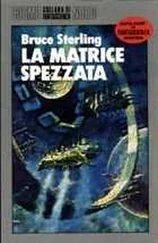Bruce Sterling - Essays. FSF Columns
Здесь есть возможность читать онлайн «Bruce Sterling - Essays. FSF Columns» весь текст электронной книги совершенно бесплатно (целиком полную версию без сокращений). В некоторых случаях можно слушать аудио, скачать через торрент в формате fb2 и присутствует краткое содержание. Жанр: Фантастика и фэнтези, на английском языке. Описание произведения, (предисловие) а так же отзывы посетителей доступны на портале библиотеки ЛибКат.
- Название:Essays. FSF Columns
- Автор:
- Жанр:
- Год:неизвестен
- ISBN:нет данных
- Рейтинг книги:3 / 5. Голосов: 1
-
Избранное:Добавить в избранное
- Отзывы:
-
Ваша оценка:
- 60
- 1
- 2
- 3
- 4
- 5
Essays. FSF Columns: краткое содержание, описание и аннотация
Предлагаем к чтению аннотацию, описание, краткое содержание или предисловие (зависит от того, что написал сам автор книги «Essays. FSF Columns»). Если вы не нашли необходимую информацию о книге — напишите в комментариях, мы постараемся отыскать её.
Essays. FSF Columns — читать онлайн бесплатно полную книгу (весь текст) целиком
Ниже представлен текст книги, разбитый по страницам. Система сохранения места последней прочитанной страницы, позволяет с удобством читать онлайн бесплатно книгу «Essays. FSF Columns», без необходимости каждый раз заново искать на чём Вы остановились. Поставьте закладку, и сможете в любой момент перейти на страницу, на которой закончили чтение.
Интервал:
Закладка:
beamed through the body in thin, precise slices. The resulting images
are neat cross-sections through the body. Unlike X-rays, magnetic
resonance doesn't ionize and possibly damage human cells. Instead, it
gently coaxes information from many different types of tissue, causing
them to emit tell-tale signals about their chemical makeup. Blood, fat,
bones, tendons, all emit their own characteristics, which a computer
then reassembles as a graphic image on a computer screen, or prints
out on emulsion-coated plastic sheets.
An X-ray is a marvelous technology, and a CAT-scan more
marvelous yet. But an X-ray does have limits. Bones cast shadows in X-
radiation, making certain body areas opaque or difficult to read. And X-
ray images are rather stark and anatomical; an X-ray image cannot
even show if the patient is alive or dead. An MRI scan, on the other
hand, will reveal a great deal about the composition and the health of
living tissue. For instance, tumor cells handle their fluids differently
than normal tissue, giving rise to a slightly different set of signals. The
MRI machine itself was originally invented as a cancer detector.
After the 1946 discovery of magnetic resonance, MRI techniques
were used for thirty years to study small chemical samples. However, a
cancer researcher, Dr. Raymond Damadian, was the first to build an MRI
machine large enough and sophisticated enough to scan an entire
human body, and then produce images from that scan. Many scientists,
most of them even, believed and said that such a technology was decades
away, or even technically impossible. Damadian had a tough,
prolonged struggle to find funding for for his visionary technique, and
he was often dismissed as a zealot, a crackpot, or worse. Damadian's
struggle and eventual triumph is entertainingly detailed in his 1985
biography, A MACHINE CALLED INDOMITABLE.
Damadian was not much helped by his bitter and public rivalry
with his foremost competitor in the field, Paul Lauterbur. Lauterbur,
an industrial chemist, was the first to produce an actual magnetic-
resonance image, in 1973. But Damadian was the more technologically
ambitious of the two. His machine, "Indomitable," (now in the
Smithsonian Museum) produced the first scan of a human torso, in 1977.
(As it happens, it was Damadian's own torso.) Once this proof-of-
concept had been thrust before a doubting world, Damadian founded a
production company, and became the father of the MRI scanner
industry.
By the end of the 1980s, medical MRI scanning had become a
major enterprise, and Damadian had won the National Medal of
Technology, along with many other honors. As MRI machines spread
worldwide, the market for CAT-scanning began to slump in comparison.
Today, MRI is a two-billion dollar industry, and Dr Damadian and his
company, Fonar Corporation, have reaped the fruits of success. (Some
of those fruits are less sweet than others: today Damadian and Fonar
Corp. are suing Hitachi and General Electric in federal court, for
alleged infringement of Damadian's patents.)
MRIs are marvelous machines -- perhaps, according to critics, a
little too marvelous. The magnetic fields emitted by MRIs are extremely
strong, strong enough to tug wheelchairs across the hospital floor, to
wipe the data off the magnetic strips in credit cards, and to whip a
wrench or screwdriver out of one's grip and send it hurtling across the
room. If the patient has any metal imbedded in his skin -- welders and
machinists, in particular, often do have tiny painless particles of
shrapnel in them -- then these bits of metal will be wrenched out of the
patient's flesh, producing a sharp bee-sting sensation. And in the
invisible grip of giant magnets, heart pacemakers can simply stop.
MRI machines can weigh ten, twenty, even one hundred tons.
And they're big -- the scanning cavity, in which the patient is inserted,
is about the size and shape of a sewer pipe, but the huge plastic hull
surrounding that cavity is taller than a man and longer than a plush
limo. A machine of that enormous size and weight cannot be moved
through hospital doors; instead, it has to be delivered by crane, and its
shelter constructed around it. That shelter must not have any iron
construction rods in it or beneath its floor, for obvious reasons. And yet
that floor had better be very solid indeed.
Superconductive MRIs present their own unique hazards. The
superconductive coils are supercooled with liquid helium.
Unfortunately there's an odd phenomenon known as "quenching," in
which a superconductive magnet, for reasons rather poorly understood,
will suddenly become merely-conductive. When a "quench" occurs, an
enormous amount of electrical energy suddenly flashes into heat,
which makes the liquid helium boil violently. The MRI's technicians
might be smothered or frozen by boiling helium, so it has to be vented
out the roof, requiring the installation of specialized vent-stacks.
Helium leaks, too, so it must be resupplied frequently, at considerable
expense.
The MRI complex also requires expensive graphic-processing
computers, CRT screens, and photographic hard-copy devices. Some
scanners feature elaborate telecommunications equipment. Like the
giant scanners themselves, all these associated machines require
power-surge protectors, line conditioners, and backup power supplies.
Fluorescent lights, which produce radio-frequency noise pollution, are
forbidden around MRIs. MRIs are also very bothered by passing CB
radios, paging systems, and ambulance transmissions. It is generally
considered a good idea to sheathe the entire MRI cubicle (especially the
doors, windows, electrical wiring, and plumbing) in expensive, well-
grounded sheet-copper.
Despite all these drawbacks, the United States today rejoices in
possession of some two thousand MRI machines. (There are hundreds in
other countries as well.) The cheaper models cost a solid million dollars
each; the top-of-the-line models, two million. Five million MRI scans
were performed in the United States last year, at prices ranging from
six hundred dollars, to twice that price and more.
In other words, in 1991 alone, Americans sank some five billion
dollars in health care costs into the miraculous MRI technology.
Today America's hospitals and diagnostic clinics are in an MRI
arms race. Manufacturers constantly push new and improved machines
into the market, and other hospitals feel a dire need to stay with the
state-of-the-art. They have little choice in any case, for the balky,
temperamental MRI scanners wear out in six years or less, even when
treated with the best of care.
Patients have little reason to refuse an MRI test, since insurance
will generally cover the cost. MRIs are especially good for testing for
neurological conditions, and since a lot of complaints, even quite minor
ones, might conceivably be neurological, a great many MRI scans are
performed. The tests aren't painful, and they're not considered risky.
Having one's tissues briefly magnetized is considered far less risky than
the fairly gross ionization damage caused by X-rays. The most common
form of MRI discomfort is simple claustrophobia. MRIs are as narrow as
the grave, and also very loud, with sharp mechanical clacking and
buzzing.
But the results are marvels to behold, and MRIs have clearly
saved many lives. And the tests will eliminate some potential risks to
Читать дальшеИнтервал:
Закладка:
Похожие книги на «Essays. FSF Columns»
Представляем Вашему вниманию похожие книги на «Essays. FSF Columns» списком для выбора. Мы отобрали схожую по названию и смыслу литературу в надежде предоставить читателям больше вариантов отыскать новые, интересные, ещё непрочитанные произведения.
Обсуждение, отзывы о книге «Essays. FSF Columns» и просто собственные мнения читателей. Оставьте ваши комментарии, напишите, что Вы думаете о произведении, его смысле или главных героях. Укажите что конкретно понравилось, а что нет, и почему Вы так считаете.



